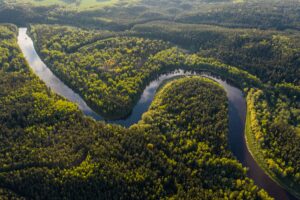Deforestation of indigenous lands in Brazilian Amazon could derail climate targets
If vast swathes of the world’s largest rainforest are not protected from industrial activity Brazil’s commitments on the environment will be irrelevant.
If Brazil does not take steps to stop the deforestation of indigenous lands in the Amazon, and enforce its own climate-related laws, the country has little chance of meeting its own green targets, to which it is committed internationally.
The warning came in a letter, Protect the Amazon’s Indigenous Lands, published in the journal Science and signed by Guilherme Augusto Verola Mataveli, a researcher in the Earth Observation and Geoinformatics Division of Brazil’s National Space Research Institute (INPE), and Gabriel de Oliveira, professor at the University of Alabama, USA. Its message is clear – existing laws must be enforced to protect the already-dwindling areas of the Amazon that are still intact. A second article, Mining and Brazil’s Indigenous Peoples, by Lucas Ferrante and Philip Fearnside, two scientists with the National Institute of Amazon Research, featured in the same publication reiterating the point.
Brazil introduced its Action Plan to Prevent and Control Deforestation in Legal Amazonia (PPCDAm) in 2003, catalysing what was supposed to be the continuous reduction in deforestation of the rainforest, and the transition to sustainable development in the region. However, the fourth phase, set to end in 2020, has been poorly resourced, and Mataveli and Oliveira’s letter points to a ‘dramatic increase’ in deforestation in the area since 2019, with the official records showing deforestation in the 12 months to July 2021 was at its highest for 15 years, with a 69% increase compared to 2012. Legal Amazonia covers around 5m square miles, across the Brazilian states of Acre, Amapá, Amazonas, Maranhão, Mato Grosso, Pará, Rondônia, and Roraima.
‘Brazil has good environmental laws that on paper should reduce and inhibit deforestation. However, enforcement of these laws is the big issue. It’s the first step, which should be associated with long-term measures, such as promoting environmental education, valorising the standing forest as a source of income for the communities that live in the Amazon, and resuming and strengthening the actions called for by the PPCDAm. They proved effective in the past,’ Mataveli told to Agência FAPESP.
In related news, the Amazon may be losing its resilience to extreme weather and other climate-related events, raising the risk of irrecoverable dieback.
Image credit: Ivars Utināns
















